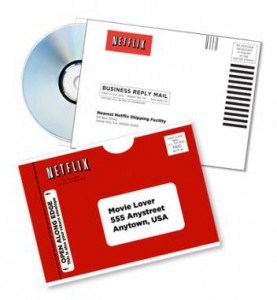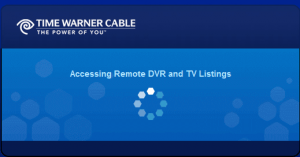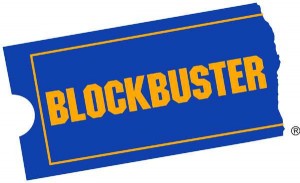
Reed Hastings, CEO of Netflix, shows off the company's growing reliance on broadband streaming, moving away from its original DVD-by-mail rental business.
Last week, Netflix CEO Reed Hastings was showered with questions from Wall Street during the company’s third quarter-results conference call. At the top of the agenda — the company’s shifting business model away from DVD rentals-by-mail gradually towards instant on-demand streaming over broadband networks.
At issue is how Netflix can survive a broadband industry that controls the pipeline Netflix increasingly depends on for its continued existence.
Hastings tried to assuage his cable competitors by telling investors the company is hardly a threat to cable-owned movie channels and basic cable. But he admits ultimately the company will be in a real mess if Internet Overcharging schemes like usage caps and speed throttles limit the amount of content customers can affordably access:
“We have some vulnerability depending on capped usage and what happens. Comcast has a cap, but it’s 250 gigabytes and so most users feel that they have an unlimited experience, and it gives us plenty of room to deliver a high-def stream. On the other hand, AT&T Mobile data on an iPad is now capped at two gigabytes, [and that’s] not enough room to deliver hours and hours of high-def. We are definitely sensitive [to the issue] in the long term [whether] the industry ends up at 250 gigabytes or two at the other extreme.”
There is some limited evidence Netflix’s success in Canada is already being tempered by usage limits near-universally imposed in the country. Rogers, a major cable company in eastern Canada, even reduced usage caps for certain tiers of service around the same time Netflix announced its imminent arrival north of the border.
Barry McCarthy, Chief Financial Officer notes fewer Canadians are converting their free trials of Netflix’s streaming service into paid subscriptions.
“We anticipate we are seeing slightly lower conversion rates in Canada than we see in the U.S.,” McCarthy told investors.
As Netflix moves towards higher quality video streams, the amount of data consumed increases as well. In Canada, that eats into broadband usage allowances, and fast. As soon as customers start receiving warnings they are nearing their monthly usage limit, or receive a broadband bill with overlimit fees, Netflix is likely to lose that customer.
Cable and phone companies in Canada are already warning customers that online video is a major culprit of exhausted usage allowances. Both are also happy to remind their customers they are happy to sell them access to unlimited video — through cable or telco TV subscriptions. Rogers owns a major chain of video rental stores as well.
What can Netflix do about usage capped broadband? Not much, admits Hastings.
“There is a not a lot of improvement in compression techniques. But what we can do is just deliver a lower bit stream, a lower quality video experience. So, for example, not too high-def. So, that’s one possible way to partially mitigate that impact,” Hastings said.
Netflix will soon face increasing competition, especially from the cable industry’s TV Everywhere projects, and they won’t deliver a lower quality video experience.
Time Warner Cable and Comcast this month both formally introduced their respective video on demand services.
![]() Comcast’s Xfinity online service arrives after months of beta testing. Comcast customers can watch video selections from nearly 90 movie and television partners, including programming from HBO, Viacom, and Paramount. Ultimately, the online video service is expected to deliver access to dozens of cable channels and individual programs from studios and networks at no charge to those who subscribe to a cable television package.
Comcast’s Xfinity online service arrives after months of beta testing. Comcast customers can watch video selections from nearly 90 movie and television partners, including programming from HBO, Viacom, and Paramount. Ultimately, the online video service is expected to deliver access to dozens of cable channels and individual programs from studios and networks at no charge to those who subscribe to a cable television package.
Time Warner Cable took a more modest approach last week by introducing ESPN Networks to its cable subscribers who register with the cable company’s MyServices website. The new customer portal allows subscribers to review and pay their cable bill, add new services (but not cancel existing ones), remotely program DVR boxes, and also verifies subscriber status for future cable subscriber-only online video programming.
Netflix may soon find itself at the mercy of the cable and telephone companies which deliver broadband access to the majority of Americans. Not only is it difficult to convince customers to pay a monthly fee for programming the cable industry may eventually give away for free, it may be downright impossible for Netflix to survive if those providers decide to squeeze the customer’s pipeline to unlimited Netflix content.
[flv width=”640″ height=”380″]http://www.phillipdampier.com/video/Comcast Xfinity Ad Spot 10-2010.flv[/flv]
Comcast Ad Introducing Xfinity Online. (1 minute)


 Subscribe
Subscribe



